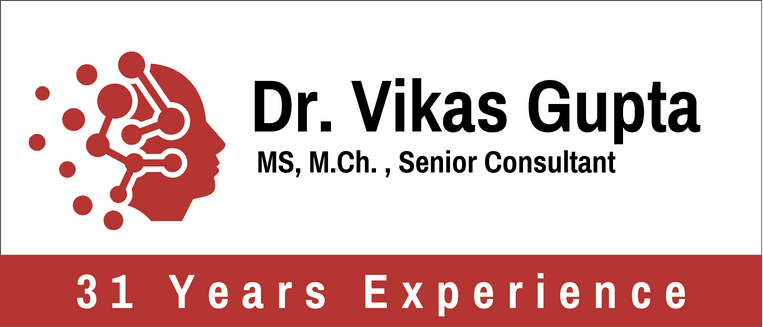
According to the World Health Organization (WHO), primary brain tumors account for approximately 2% of all cancers worldwide. Around 256,000 new cases are reported annually globally, varying across regions and countries.
Malignant gliomas, including the aggressive glioblastoma multiforme (GBM), represent a substantial portion of neuro-oncology cases globally. GBM has an incidence of 0.59 per 100,000 people worldwide, emphasizing the prevalence and challenges associated with these tumors on a global scale.
Neuro-oncology, the specialized field at the crossroads of neurology and oncology, plays a pivotal role in understanding and treating tumors that afflict the central nervous system (CNS). This multidisciplinary field encompasses a range of challenges, from diagnosis to treatment, and it holds the key to unlocking the mysteries of brain and spinal cord tumors.
This blog will delve into neuro-oncology’s crucial functions, discuss the complexities it addresses, and examine global statistics to comprehend the scope of its impact.
What is Neuro-Oncology?
Neuro-oncology is dedicated to the comprehensive study of tumors affecting the CNS, encompassing both benign and malignant growths. These tumors may arise in the brain, spinal cord, or peripheral nerves, presenting diverse challenges that demand a specialized approach. The primary focus areas within neuro-oncology include diagnosis, treatment, and ongoing research to improve outcomes for patients facing these complex conditions.
What is the Role of Neuro-Oncology in Diagnosis?
One of the primary functions of neuro-oncology is the accurate and timely diagnosis of tumors affecting the CNS. Advanced imaging techniques, including magnetic resonance imaging (MRI) and computed tomography (CT), play a central role in visualizing these tumors and determining their characteristics, such as size, location, and involvement of surrounding structures.
However, the intricacies of the CNS make diagnosis a complex task. The blood-brain barrier, a protective barrier that regulates the passage of substances into the brain, can complicate the delivery of contrast agents used in imaging. Additionally, the location of tumors within the brain may present challenges in accessing and obtaining biopsy samples for confirmation and further analysis.
What are the Treatment Modalities in Neuro-Oncology?
Neuro-oncology employs a multidisciplinary approach to treatment, considering surgery, radiation therapy, and chemotherapy among the primary modalities. The choice of treatment depends on factors such as the type and location of the tumor, its grade (benign or malignant), and the patient’s overall health.
Dr. Vikas Gupta says, “Surgery is often the initial step in the treatment of CNS tumors, aiming to remove as much of the cancer as possible while preserving critical neurological functions. Advanced surgical techniques, including image-guided surgery and laser interstitial thermotherapy, improve precision and reduce collateral damage.
Radiation therapy utilizes high-energy rays to target and destroy cancer cells. Techniques such as stereotactic radiosurgery and fractionated radiotherapy allow precise targeting while minimizing exposure to surrounding healthy tissues.
Chemotherapy, the use of drugs to kill or inhibit the growth of cancer cells, is a standard treatment modality in neuro-oncology. However, the blood-brain barrier poses a challenge to effective drug delivery, and research efforts focus on developing novel approaches to enhance drug penetration into the CNS.”
What are the Advances in Precision Medicine?
One of the transformative developments in neuro-oncology is integrating precision medicine into treatment strategies. Molecular profiling of tumors allows for a personalized approach, identifying specific genetic mutations and alterations that can be targeted with tailored therapies.
“Precision medicine not only enhances the effectiveness of treatment but also minimizes side effects by honing in on the unique characteristics of each patient’s tumor. This individualized approach is reshaping the landscape of neuro-oncology, offering new hope for improved outcomes and quality of life,” says Dr. Gupta.
What are the Global Challenges and Disparities?
While neuro-oncology strives for progress and innovation, it is crucial to acknowledge the global challenges and disparities that persist. The following are some of the most significant issues and discrepancies.
- Access Disparities: Discrepancies in access to advanced diagnostic tools and state-of-the-art treatments exist globally, with significant variations among regions and countries.
- Healthcare Infrastructure Challenges: Low- and middle-income countries encounter limitations in healthcare infrastructure, hindering the timely diagnosis and treatment of neuro-oncological conditions.
- Delayed Diagnoses: Limited access to advanced diagnostic tools contributes to delayed diagnoses in certain regions, impacting the overall prognosis for individuals with CNS tumors.
- Limited Treatment Options: Healthcare disparities extend to treatment options, with some regions lacking access to the latest advancements and specialized neuro-oncological treatments.
- Outcomes Disparities: Disparities in healthcare infrastructure and resources contribute to varying outcomes for neuro-oncology patients globally, emphasizing the need for a more inclusive and equitable approach.
- International Collaboration: Addressing global challenges requires a collaborative effort, so we should encourage international collaboration among healthcare professionals, researchers, and policymakers.
Conclusion
Neuro-oncology addresses complicated central nervous system tumor issues by evolving via accurate diagnosis, personalized therapies, and continuous research, providing hope to people all over the world. Global data highlight the effect of CNS tumors, prompting joint efforts to improve diagnosis, treatment, and outcomes.
Neuro-oncology seeks to redefine the narrative around CNS tumors by emphasizing international cooperation, research funding, and resolving inequities. The objective is to create a future where all persons, regardless of location, receive optimal treatment that transcends geographical borders to manage these difficulties better.
FAQs in Neuro-Oncology:
What are some challenges in diagnosing CNS tumors?
The blood-brain barrier and tumor locations can complicate the delivery of contrast agents and obtaining biopsy samples.
How does neuro-oncology contribute to personalized treatment?
Molecular profiling enables the identification of genetic mutations, allowing for tailored therapies and minimizing side effects.
What is the role of surgery in neuro-oncological treatment?
Surgery aims to remove as much of the tumor as possible while preserving neurological functions, employing advanced techniques like image-guided surgery.
How does limited healthcare infrastructure impact neuro-oncology globally?
Low- and middle-income countries face delays in diagnosis and limited treatment options due to healthcare infrastructure challenges.
What is the significance of international collaboration in neuro-oncology?
Collaborative efforts are crucial to address disparities, share knowledge, and improve overall neuro-oncological care globally.
Read Also : Is Tumor Embolization a Major Surgery?
